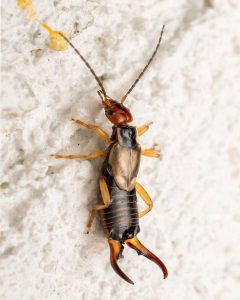As a parent, there are few things more nerve-wracking than seeing your child in discomfort—especially when the cause is a mysterious insect bite. The sight of a red bump or hearing your child describe a pinch or sting can instantly trigger anxiety. Is it dangerous? Will there be lasting effects? What kind of bug did this? These are all natural questions, and in many cases, the fear of the unknown can be far worse than the bite itself. One insect that often causes alarm among parents is the earwig. With its long, slender body and intimidating pincers, it’s no surprise that people jump to conclusions. However, the truth is that earwigs are relatively harmless to humans. Gaining a better understanding of what earwigs are, how they behave, and what to do in case your child comes into contact with one can go a long way toward easing fears and promoting calm, informed responses.

Earwigs are part of the Dermaptera order and are characterized by their flat, elongated bodies and distinctive pincers located at the rear of their abdomens. These pincers, or forceps, may look menacing, but they’re primarily used for defense and capturing prey, not for attacking humans. These insects are nocturnal and thrive in dark, moist environments. You’ll commonly find them in gardens, under mulch, beneath flower pots, or hiding in piles of wood. Occasionally, they might wander into homes, especially during hot or dry weather, but they’re not invasive pests. They don’t nest indoors or spread disease, and they aren’t known to cause structural damage or infestations.
If you believe your child has been bitten or pinched by an earwig, it’s helpful to know what symptoms to expect. First, it’s important to clarify that earwigs don’t “bite” in the traditional sense. Instead, they may use their pincers if they feel threatened, which can lead to a slight pinch on the skin. Most children who are pinched by an earwig experience minor symptoms. You might notice a small red mark at the site, some localized swelling, or mild irritation. These symptoms are usually short-lived and don’t require special medical treatment. Children may be momentarily frightened or upset, but physical symptoms typically disappear within a day or two. As a parent, your first role is to comfort your child and reassure them that they are okay.
After discovering any kind of bug bite, whether from an earwig or another insect, the first thing you should do is clean the area thoroughly with mild soap and water. This step helps reduce the risk of infection, especially since children may be tempted to scratch the area. Applying a cool compress to the bite can reduce swelling and soothe discomfort. If your child complains of itching, over-the-counter remedies such as hydrocortisone cream or oral antihistamines can help. Monitor the area over the next 24 to 48 hours. Look for any signs that the irritation is worsening—such as increased redness, spreading rash, pus, or warmth around the bite site. If any of these symptoms appear, it may suggest an infection and should be evaluated by a healthcare provider.
Although serious reactions to earwig pinches are rare, there are situations in which you should seek immediate medical care. If your child experiences difficulty breathing, breaks out in hives, becomes dizzy, or shows any other signs of an allergic reaction, don’t hesitate to go to the emergency room or call 911. Similarly, if the swelling becomes severe or the pain seems out of proportion to the injury, it’s a good idea to consult a doctor. It’s always better to err on the side of caution when it comes to your child’s health and well-being.
One of the best ways to protect your child from encountering earwigs in the first place is by practicing prevention around your home and yard. Begin by reducing the number of places where earwigs can hide. This includes removing piles of leaves, wood, or mulch from around your house. Make sure window screens are intact and that doors and windows are sealed to prevent insects from wandering inside. You can also use natural repellents such as diatomaceous earth or diluted essential oils like peppermint or tea tree oil around the perimeter of your home. These substances are generally safe for children and pets while being effective deterrents for many insects, including earwigs. Teaching your children not to play in damp, shaded areas without supervision can also help avoid accidental contact.
Perhaps the most valuable takeaway for any parent is the importance of remaining calm and informed. The appearance of an earwig can be startling, especially for those unfamiliar with the insect. But the more you know about earwigs and their limited impact on human health, the less anxious you’ll feel when dealing with them. Most earwig encounters end with no harm done—just a few moments of discomfort and maybe a little fear. By responding with knowledge instead of panic, you can model confidence for your child and help them feel secure. Children look to their parents for reassurance, and your calm reaction can turn a potentially frightening moment into a learning experience.
In conclusion, discovering that your child has been pinched or bitten by a strange bug can certainly set your nerves on edge. But understanding that earwigs are largely harmless, and knowing exactly what steps to take if your child is affected, can ease your mind significantly. These bugs may look a little scary, but their bite—or more accurately, their pinch—is generally mild and easy to treat. Clean the area, apply a cool compress, and monitor for any unusual reactions. If all appears normal, there’s no reason for alarm. Keeping your home and yard free from clutter and moisture will also help reduce the likelihood of future run-ins. With the right information, a calm demeanor, and a focus on prevention, you can handle these situations with confidence and care.





